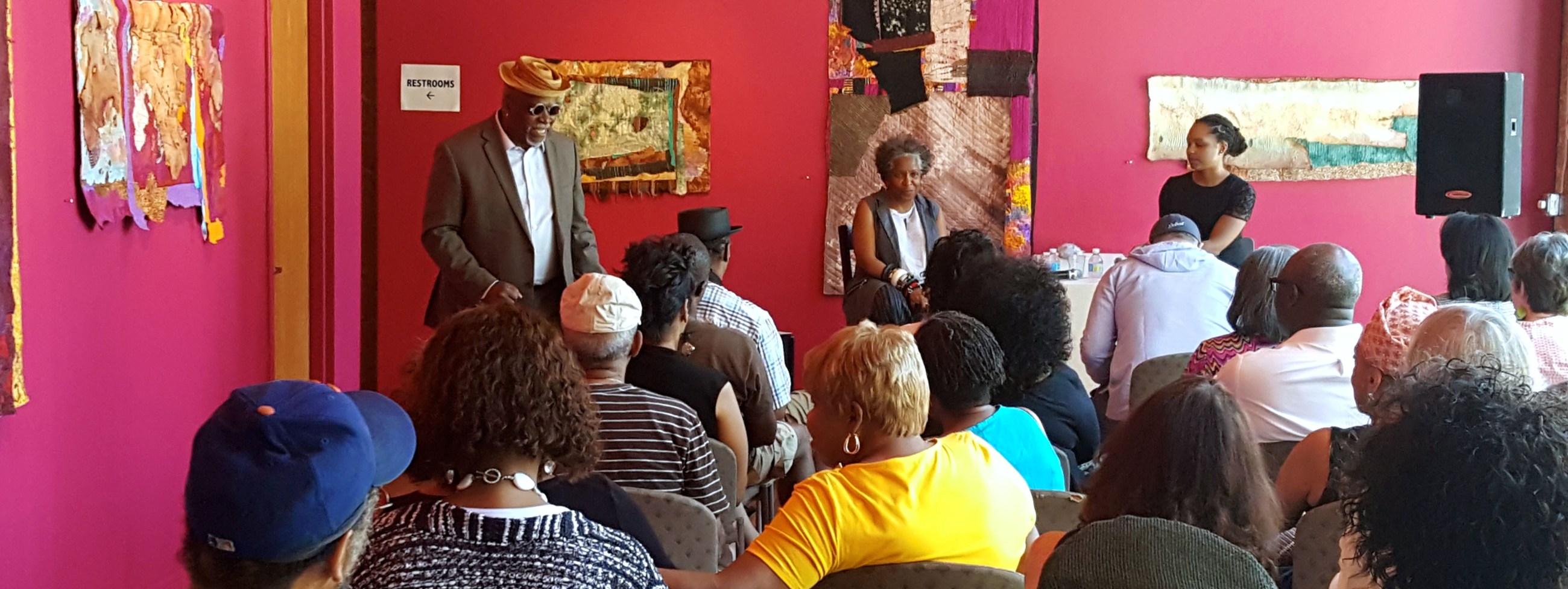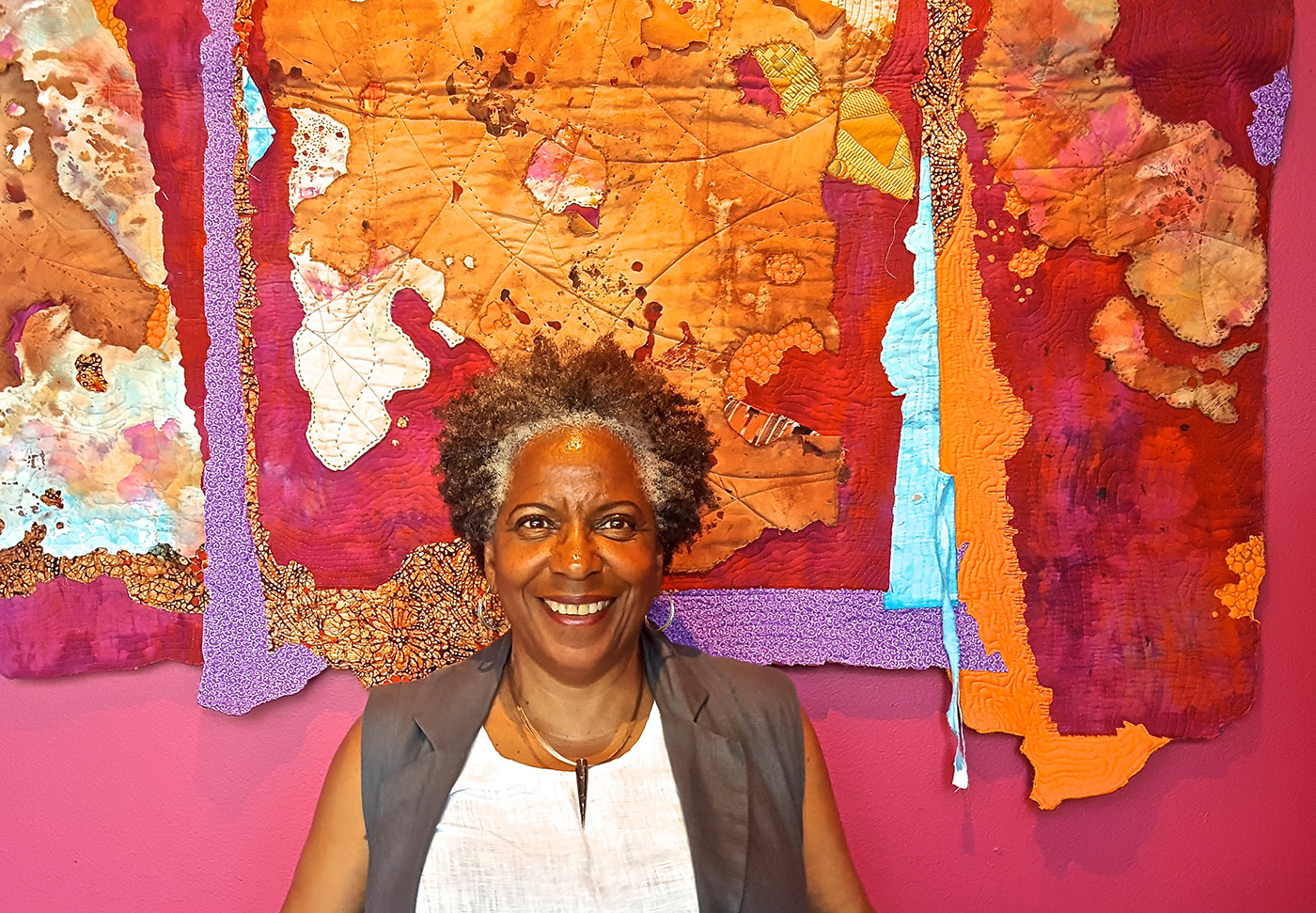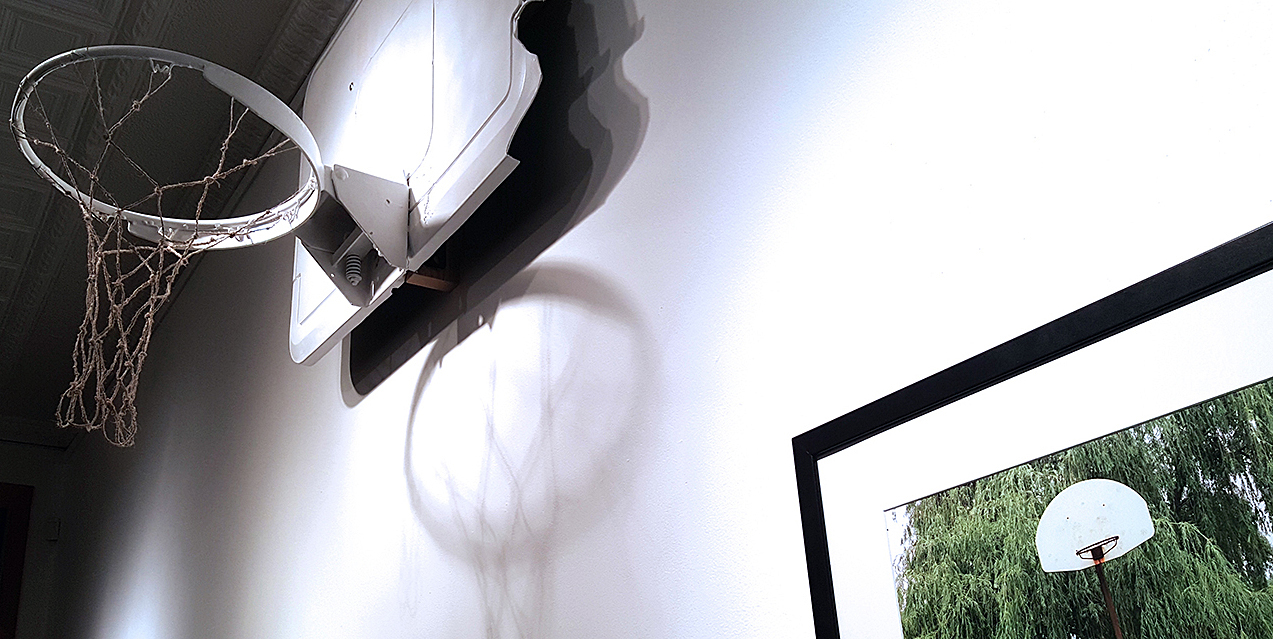
Artists Carole Harris and Ash Arder connect in a gallery talk at N’Namdi Center for Contemporary Art
Above: George N’Namdi introduces the artists for a full house at N’Namdi Center for Contemporary Art. Photos by Rosie Sharp.
An engaged crowd was on hand at N’Namdi Center for Contemporary Art in Detroit on June 11, for an artist talk between veteran artist Carole Harris, whose multi-layered fiber works are on display in the Rose Gallery through June 25th, and Ash Arder, who brings youthful energy and a hunger for history to her practice of contemporary fiber and found object art. The conversation took place before a full house at N’Namdi, a Knight Arts Challenge winner, and demonstrated the kind of legacy-building that is possible when we look to our human resources for direction and inspiration.
“I’m an old-school fiber artist; Ashley is the new school,” said Harris, by way of introduction. “She came up with the Internet; I came up at my mother’s knee.”

Carole Harris poses in front of one of her fiber art pieces, currently on display at N’Namdi.
Still, despite the generation gap, there is much conceptual overlap between Harris and Arder–although their finished works appear quite different. Harris’s practice has always been process-driven, rooted in sewing from a young age, something that her mother introduced to her, “to keep me busy, out of trouble.” Harris can recall when sewing was part of the Detroit Public Schools curriculum, and she leveraged these practical skills to make clothing better suited to her diminutive frame than what was commercially available. Sewing and quilt-making always occupied a functional aspect of her art-making, being subsumed in a successful interior design business that was her main means of support for decades. Only in the last five years, after retiring from interior design, has she had the creative space and energy to allow her fiber arts practice to expand in highly experimental directions. The results are stunning.
Arder, by contrast, has always worked from a conceptual standpoint. Attracted to found objects, and taking photographs as a means of observation more than artistic expression, per se, her abiding interest is in people, objects and places—and their planned and unplanned interactions. Her work with fiber has manifested, most recently, as an interest in creating her own natural fibers, which she does by cultivating, preparing and processing stinging nettle plants—usually considered a weed (and a painful one, at that), but which hold strong medicinal and material properties. Arder was recently part of a group show, “Photo Pool: Photography Based Art Beyond Photographs,” at Public Pool (another Knight Arts grantee), which featured, among other things, a basketball hoop with a net woven from Arder’s nettle-yarn. “Technology is easy,” said Arder. “Internet is easy. I have a desire to get back to the basics. Can I grow something?”

“Net Worth 1” by Ash Arder at Public Pool.
The overlap in these radically different processes lies in sense of object-reality to which both artists subscribe. There is a strong sense of memory and energetic signature alive in the objects that Arder collects from the street in her trusty station wagon, and the fabrics that Harris has recently begun to solicit from friends and relations for repurposing in her fiber works. Both have a strong sense that history and memory can be captured and held within objects, and both are attempting to access that energy in their works. There is a real sense of seeking, on Arder’s part, to connect with a mentor and role model in fiber art, and she has a pay-it-forward ethic when it comes to her own work. “I’m documenting my process so the me of the future can find some bread crumbs,” she said.
For her part, Harris seems to get as much from the exchange of ideas as she gives, citing an appreciation for Arder’s understanding of current technology and dissemination techniques, and her perspective on art-making. Both of them seem to have developed a fascination with rust–Arder, by way of collecting objects that are often in states of industrial decay, and Harris, as an experimental dyeing technique. Harris discussed her interest in the “rust collections” of artists like Knight Arts grantee Olayami Dabls, and Arder all but publicly demanded to collaborate on a future project. It was certainly inspiring to see these two women, practicing art in ways that are different and ways that are uncannily the same, build a bridge across generations to connect creatively—and it would certainly be interesting to see if something tangible emerges from that connection, going forward.
“Reveal: Conceal/Conceal: Reveal” by Carole Harris will remain on display at N’Namdi Center for Contemporary Art through June 25.
Recent Content
-
Artsarticle ·
-
Artsarticle ·
-
Artsarticle ·

